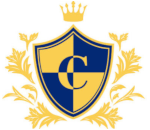Children start school in primary education when they are 4 or 5 years old. After 8 years they continue on to secondary education. Depending on the choices they make in secondary school, they can continue to study higher education or secondary vocational studies.
Primary education (Primair Onderwijs/PO)
Pupils enter primary school when they are 4 or 5 years old and continue this for 8 years. It’s important for parents to apply for a school well in advance, because some schools have waiting lists. Schools can determine what classes they give and how, but the government has set up some requirements that every school has to comply to.
Secondary education (Voortgezet Onderwijs/VO)
Here pupils can choose one of three directions. The first few years are practically the same for all 3 choices, but after this there are big differences. Most schools hand out report cards 3 to 4 times a year, where you can follow your child’s progress.
Like primary education, there are no fees to be paid as long as the pupils go to school according to the rules on compulsory education. There are however costs for books, trips and other services that the school might provide.
The three main directions are:
- Pre-vocational secondary education (Voorbereidend Middelbaar Beroepsonderwijs/VMBO): Within this education, there are many directions and sub-directions that students can choose. It’s best to talk about this with the school you have chosen and see what appeals most to your child.
- Senior general secondary education (Hoger Algemeen Voortgezet Onderwijs/HAVO): This education takes 5 years to complete and is meant as a preparation for a Bachelor’s degree.
- Pre-university education (Voorbereidend Wetenschappelijk Onderwijs/VWO): VWO takes 6 years to complete and is meant as preparation for a Master’s degree.
Secondary vocational education (Middelbaar Beroepsonderwijs/MBO)
As an alternative, you can send your child to a secondary vocational education. The Netherlands have 40 regional training centres (Regionale Opleidingscentra/ROC). They offer vocational education in three sectors: Engineering & Technology, Economics & Health and Social Care. In total, they offer 700 courses for students starting at age 16. There are 2 routes: a full-time college-based route with work placements and a part-time work-based route, where part-time education is combined with an apprenticeship.
Education cost
Primary and secondary education are free of charge. However, the schools are allowed to ask for a ‘parent’s contribution’ (ouderbijdrage) to pay for extra’s such as swimming lessons, party’s, school trips, etc. Parents are not obligated to pay this, but if they don’t pay then their child can be excluded from these activities. Schoolbooks that need to be purchased are not included in this parent’s contribution and need to be paid for separately.
International schools
Besides the Dutch schools, there are also many international primary and secondary schools where classes are given in English, French or other languages. These can be found on the website of the ‘Foundation for International Education in the Netherlands’ (www.sio.nl ).
There are also almost 100 schools in the Netherlands with bilingual education (tweetalig onderwijs), where about half of the courses are thought in English and half in Dutch. As parents, you need to decide whether you want your child to learn 2 languages (which will possibly slow down the learning process), or only Dutch.



